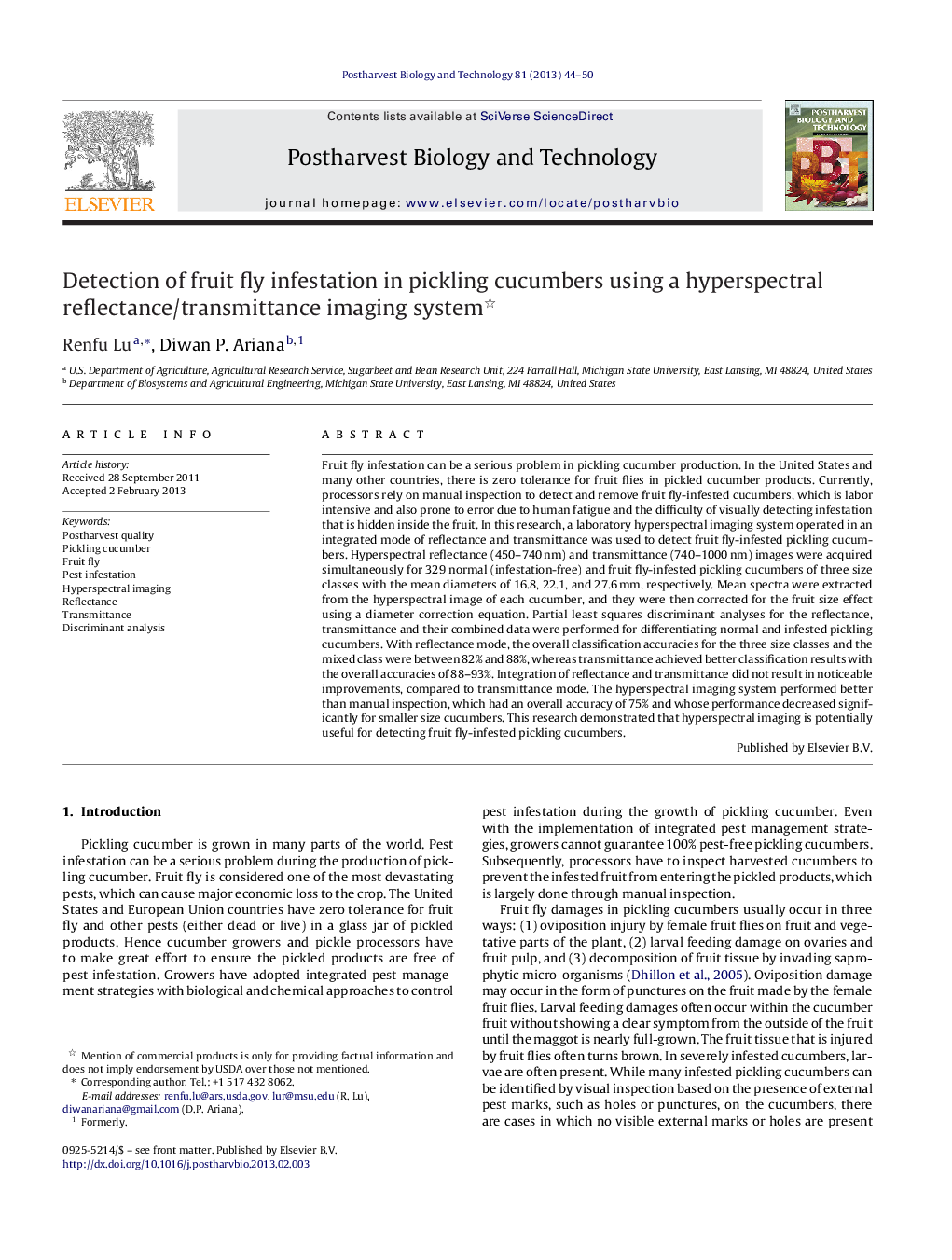| Article ID | Journal | Published Year | Pages | File Type |
|---|---|---|---|---|
| 4518453 | Postharvest Biology and Technology | 2013 | 7 Pages |
Fruit fly infestation can be a serious problem in pickling cucumber production. In the United States and many other countries, there is zero tolerance for fruit flies in pickled cucumber products. Currently, processors rely on manual inspection to detect and remove fruit fly-infested cucumbers, which is labor intensive and also prone to error due to human fatigue and the difficulty of visually detecting infestation that is hidden inside the fruit. In this research, a laboratory hyperspectral imaging system operated in an integrated mode of reflectance and transmittance was used to detect fruit fly-infested pickling cucumbers. Hyperspectral reflectance (450–740 nm) and transmittance (740–1000 nm) images were acquired simultaneously for 329 normal (infestation-free) and fruit fly-infested pickling cucumbers of three size classes with the mean diameters of 16.8, 22.1, and 27.6 mm, respectively. Mean spectra were extracted from the hyperspectral image of each cucumber, and they were then corrected for the fruit size effect using a diameter correction equation. Partial least squares discriminant analyses for the reflectance, transmittance and their combined data were performed for differentiating normal and infested pickling cucumbers. With reflectance mode, the overall classification accuracies for the three size classes and the mixed class were between 82% and 88%, whereas transmittance achieved better classification results with the overall accuracies of 88–93%. Integration of reflectance and transmittance did not result in noticeable improvements, compared to transmittance mode. The hyperspectral imaging system performed better than manual inspection, which had an overall accuracy of 75% and whose performance decreased significantly for smaller size cucumbers. This research demonstrated that hyperspectral imaging is potentially useful for detecting fruit fly-infested pickling cucumbers.
► Hyperspectral reflectance and transmittance images are acquired from pickling cucumbers. ► A method is proposed for minimizing the fruit size effect on the transmittance analysis. ► Classification models are developed to segregate normal cucumbers from pest-infested ones. ► Transmittance mode is more effective for detecting pest-infested cucumbers. ► Hyperspectral imaging achieves superior results in detecting pest-infested cucumbers.
